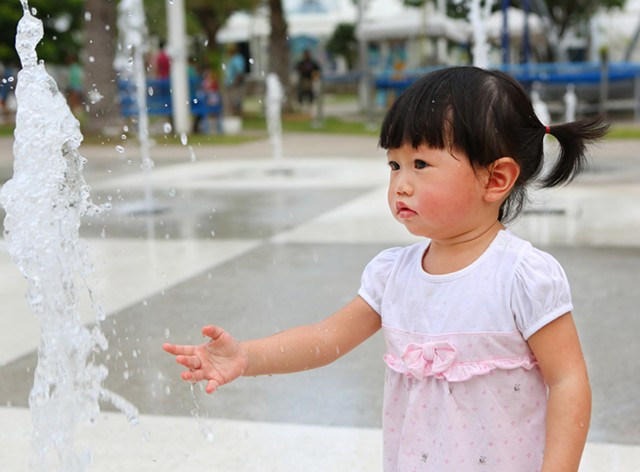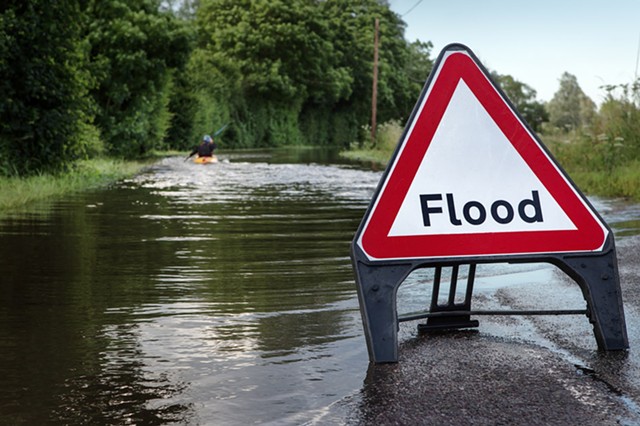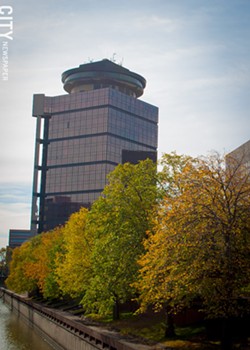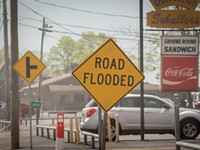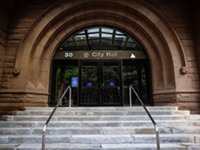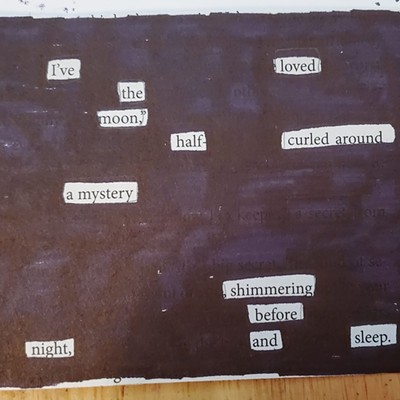[
{
"name": "500x250 Ad",
"insertPoint": "5",
"component": "15667920",
"parentWrapperClass": "",
"requiredCountToDisplay": "1"
}
]
But as a planet, we took too long to act. And even now, many countries are dragging their feet and pretending that if they just ignore the problem it'll go away.
Climate change is already here. Average temperatures are rising, and so are the oceans. Polar ice cover is shrinking, permafrost is thawing, and intense storms – rain, snow, hurricanes, wind – are getting stronger and more frequent.
Communities everywhere have realized that they need to prepare for the inevitable, the City of Rochester included. That's why officials here are preparing a pair of plans to identify in what ways the city is vulnerable to climate change and how it can adapt to the shifts that are already happening and the ones that are coming. The city previously completed a Climate Action Plan, which lays out strategies to reduce its greenhouse gas contributions.
"We're not waiting for the change to happen, we're trying to anticipate the change that we know is coming," that way residents and infrastructure are protected, says Anne Spaulding, the City of Rochester's manager of environmental quality.
Right now, city officials are working on a climate vulnerability assessment, which will identify specific climate and extreme weather problems the city is likely to face in the coming years. And when that's done, they'll prepare a climate adaptation plan. The City of Rochester received state funding to help pay for it.
Discussions about how climate change affects cities most often focus on coastal communities and sea level rise. For example, New York City was inundated with ocean water during 2012's Hurricane Sandy. Sea levels around New York City have increased by a foot since 1900, according to the State Department of Environmental Conservation. The city's waterfront wasn't built with the higher ocean levels in mind and they couldn't protect nearby areas of the city from surging water that Sandy caused.
The issues facing cities such as Rochester haven't been as prominent, but they are very real. Flooding is one concern – not because of sea level rise but because of changes in precipitation patterns. Both flooding and precipitation will likely be addressed in the city's vulnerability and adaptation documents.
The two studies will generally talk a lot about extreme weather, from the potential for stronger windstorms to the frequency of very hot and cold days, Spaulding says. And they'll explore things like what tree species will be able to thrive here in coming years, as well as the potential for new pests.
Climate issues, like so many other things, tend to hit vulnerable people the hardest. The plans will lay out the threats to children, the elderly, and people living in poverty, and how the city and other organizations can help them, Spaulding says. For example, the city already provides public cooling centers during very hot days and warming centers on very cold ones.
The vulnerability assessment should be finished by September, at which time the city should be ready to start the adaptation plan, Spaulding says. The plan, a pretty substantial undertaking, is expected to take approximately two years to finish.
As for the already-completed Climate Action Plan, some members of the Rochester People's Climate Coalition say they want to know how the city is going to follow through on it. The RPCC supports the plan, and the group's members helped guide the document's development. They just worry that important objectives could fall to the wayside.
The document sets a goal of reducing citywide greenhouse gas emissions 40 percent from 2010 levels by 2030. And it spells out a bunch of actions the city, its businesses, and its residents can take to get there. They include making buildings more energy efficient, increasing renewable energy usage, and working with the Rochester Genesee Regional Transportation Authority to boost bus ridership.
City officials have followed through on one key recommendation: They're pursuing a Community Choice Aggregation program that could help many city residents buy clean energy for less than they currently pay for electricity.
Officials are also rolling the climate action plan into the broader Comprehensive Plan, just as they're doing with other plans about bike infrastructure, waterfront revitalization, and brownfield redevelopment. The Comprehensive Plan will provide a long-term blueprint for city officials and staff to work off of, and it should be finished by this fall.
As part of its climate vulnerability assessment and adaptation plan, the city is identifying problems it may face and how it can address them. Here are a few issues city officials have already recognized and some of the steps they may take to cope with the problems.
The problem: Hot Days
What's happening: Global average temperatures are on the rise, and 2017 was the second warmest year on record, according to NASA. Climate data shows a gradual, long-term increase in Monroe County's yearly average temperature, too.
The county is also seeing more days where the temperature tops 90 degrees, and climate scientists project that in the coming years and decades, the Northeast US will experience heat waves that are longer and more intense than in the past. Hot weather can be dangerous for people who are vulnerable to heat-related illness: children, the elderly, and people with cardiovascular or respiratory disorders.
How the city could respond: Officials already declare a Cool Sweep event any time weather forecasts say temperatures could exceed 85 degrees. The city offers its community and recreation centers for people who need to cool off, and it keeps pools and spray parks open later than usual.
"We're already reacting to these things now," says Anne Spaulding, the city's environmental quality manager, "and we know that we probably will have to do more of this in the future."
Low-income residents who can't afford air conditioners are also vulnerable to heat-related illness, such as heat exhaustion or heat stroke. The state already has a program to help low-income households buy air conditioners, and the city could work with the state or other partners to broaden such efforts.
The problem: Heavy Rains
What's happening: The amount of rain and snow that Rochester gets has been relatively flat, and will remain relatively flat, according to scientists' projections. The way the water's coming down, however, is changing. Downpours are happening more often and they're more intense than they used to be, a trend scientists expect to continue.
When a lot of rain comes down at once, it runs off of paved surfaces and into storm drains. The runoff can overwhelm the sewage system and cause untreated overflows into the Genesee River. The rain and runoff can also lead to flooding; certain intersections and segments of roads are prone to collecting the water.
How the city could respond: Green infrastructure can go a long way toward offsetting runoff issues. Greater use of porous pavement in lots across Rochester would reduce runoff, as would more green roofs, Spaulding says. The city could also make greater use of bioswales or rain gardens, which are landscape features that use natural elements to absorb and filter stormwater runoff.
The problem: The impacts on trees
What's happening: Trees are a benefit when it comes to preventing and coping with the effects of climate change. But as things like temperatures and precipitation patterns shift, the types of trees that will thrive in city neighborhoods may shift also, Spaulding says.
Those same changes may provide a more welcoming environment for invasive pests. Take the emerald ash borer, for example. Researchers have found that populations of the tree-killing beetle grow faster when they aren't subject to prolonged cold, which allows them to spread quicker and do more damage.
How the city could respond: The city stopped planting ash trees when officials learned the ash borer was coming this way. It's a reasonable assumption that they'd base future tree choices on the climate data compiled as part of the vulnerability and adaptation plans.
An earlier version of this article incorrectly stated the status of the city's potential Community Choice Aggregation energy program. City officials are pursuing such a program, but one isn't in place yet.
